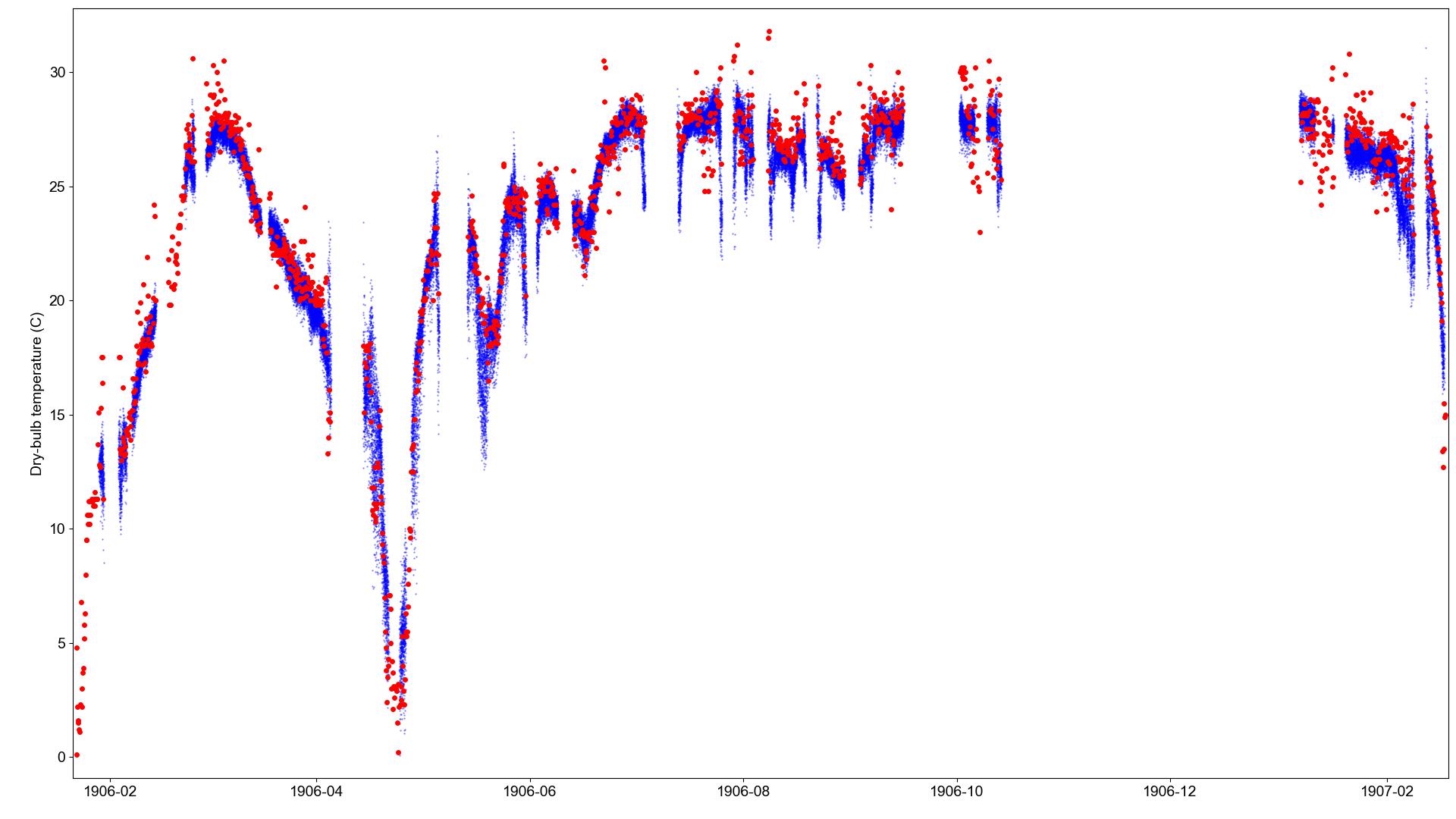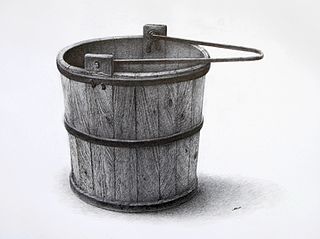SMS Planet voyage of 1906-7: Air temperature observations¶

Air temperature observations made by the Planet (red dots), compared with co-located air.2m in the 20CRv3 ensemble (blue dots).¶
Get the 20CRv3 data for comparison:
import IRData.twcr as twcr
import datetime
for month in range(1,11):
dtn=datetime.datetime(1906,month,1)
twcr.fetch('air.2m',dtn,version='4.5.1')
for month in (1,2):
dtn=datetime.datetime(1907,month,1)
twcr.fetch('air.2m',dtn,version='4.5.1')
Extract 20CRv3 2m air temperature at the time and place of each IMMA record. Uses this script:
#!/usr/bin/env python
# Extract data from 20CRv3 along the route of a ship.
# Generates a set of jobs to be run in parallel on SPICE
import IMMA
o_source=IMMA.read('../../../../imma/Planet_1906-7.imma')
f=open("run.txt","w+")
for var in ('prmsl','air.2m','air.sfc'):
for start in range(0,len(o_source),10):
f.write("./get_comparators.py --imma=%s --var=%s --start=%d --end=%d\n" %
('../../../../imma/Planet_1906-7.imma',var,start,start+9))
f.close()
Make the figure:
#!/usr/bin/env python
# Plot a comparison of a set of ship obs against 20CRv3
# Requires 20CR data to have already been extracted with get_comparators.py
import glob
obs_file='../../../../imma/Planet_1906-7.imma'
pickled_20CRdata_files=glob.glob('pickles/20CRv3_air.2m.*.pkl')
import pickle
import IMMA
import datetime
import numpy
import matplotlib
from matplotlib.backends.backend_agg import \
FigureCanvasAgg as FigureCanvas
from matplotlib.figure import Figure
# Load the data to plot
obs=IMMA.read(obs_file)
ob_dates=([datetime.datetime(o['YR'],o['MO'],o['DY'],int(o['HR']))
for o in obs if
(o['YR'] is not None and
o['MO'] is not None and
o['DY'] is not None and
o['HR'] is not None)])
ob_values=[o['AT'] for o in obs if o['AT'] is not None]
rdata=[]
for pkf in pickled_20CRdata_files:
nrd=pickle.load(open(pkf,'rb'))
for element in nrd:
rdata.append(element)
rdata_values=[value-273.15 for ensemble in rdata for value in ensemble[3]]
# Set up the plot
aspect=16.0/9.0
fig=Figure(figsize=(10.8*aspect,10.8), # Width, Height (inches)
dpi=100,
facecolor=(0.88,0.88,0.88,1),
edgecolor=None,
linewidth=0.0,
frameon=False,
subplotpars=None,
tight_layout=None)
canvas=FigureCanvas(fig)
font = {'family' : 'sans-serif',
'sans-serif' : 'Arial',
'weight' : 'normal',
'size' : 14}
matplotlib.rc('font', **font)
# Single axes - var v. time
ax=fig.add_axes([0.05,0.05,0.945,0.94])
# Axes ranges from data
ax.set_xlim((min(ob_dates)-datetime.timedelta(days=1),
max(ob_dates)+datetime.timedelta(days=1)))
ax.set_ylim((min(min(ob_values),min(rdata_values))-1,
max(max(ob_values),max(rdata_values))+1))
ax.set_ylabel('Dry-bulb temperature (C)')
# Ensemble values - one point for each member at each time-point
t_jitter=numpy.random.uniform(low=-6,high=6,size=len(rdata[0][3]))
for i in rdata:
ensemble=numpy.array([v-273.15 for v in i[3]]) # in hPa
dates=[i[0]+datetime.timedelta(hours=t) for t in t_jitter]
ax.scatter(dates,ensemble,
10,
'blue', # Color
marker='.',
edgecolors='black',
linewidths=0.0,
alpha=0.5,
zorder=50)
# Observations
ob_dates=([datetime.datetime(o['YR'],o['MO'],o['DY'],int(o['HR']))
for o in obs if
(o['AT'] is not None and
o['YR'] is not None and
o['MO'] is not None and
o['DY'] is not None and
o['HR'] is not None)])
ob_values=([o['AT']
for o in obs if
(o['AT'] is not None and
o['YR'] is not None and
o['MO'] is not None and
o['DY'] is not None and
o['HR'] is not None)])
ax.scatter(ob_dates,ob_values,
100,
'red', # Color
marker='.',
edgecolors='black',
linewidths=0.0,
alpha=1.0,
zorder=100)
fig.savefig('AT_comparison.png')
